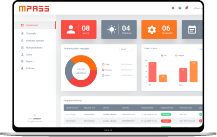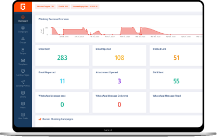Mobile Malware: 3 common threats
With mobile phones becoming an integral part of our daily life and with many shifting from desktops to mobile devices as their main way of computing, cybercriminals are following along. Unfortunately, the threats posed by mobile malware are evolving and becoming more sophisticated than ever, making them one of the rising cyber threats at this time.

Cybercriminals are in constant search of sensitive data, and when such data is detected on a device, they will try their best to gain access through the device’s security flaws. Unfortunately, many do not educate themselves about the risks of having unsecure mobile devices resulting in being the perfect targets for these criminals. There have been multiple vulnerabilities and attacks made on mobile device companies such as, Apple and Android, which opened the eyes of some to how they put their full trust into these companies when at any moment their systems could be compromised. There are many types of malwares launched on mobiles and learning about them could help you prevent an attack. Now, let’s dive into the different types of malware.
3 Main Mobile Malware threats
Mobile malware is a malicious malware that specifically targets mobile phones, smartwatches, and tablet operating systems with the goal to steal private data. This Malware is constantly adapting and evolving to gain access to mobile devices.
Let us see what threats your mobile devices might face:
– Trojan’s: A Trojan is a computer program that is meant to disrupt or steal personal data such as text messages or browsing history while staying unnoticed. A Trojan first portrays as if it is a legitimate application or file then it tries to trick you into downloading the malware on your device. And, with many people relying on their mobiles for their financials for instance, this led criminals to use trojans to steal information, these trojans are known as Banking trojans. In 2020, McAfee Mobile security has discovered that Banking Trojan activity increased by 141%, and the number continues to rise in 2021 (McAfee Mobile Threat Report 2021).
– Adware: or sometimes known as Madware, Mobile Adware, is a type of software designed to display intrusive advertisements on a user’s screen without their permission. It generally gets onto a phone by installing a script or software, and it often happens without the user’s knowledge. Most types of adware are designed to collect personal data from your phone with spyware to spam you with ads. This private data varies from passwords to your location and even your contact list. Adware is difficult to remove as it was designed to install itself unnoticed. It has been the most prevalent threat to Android smartphones this year, accounting for 45% of all attacks. This malware poses a threat not only to you but also to anyone on your contact list.
– Ransomware: Yes, even your mobile phones are exposed to ransomware attacks! This is a surprise for many due to the fact that users are not educated about this topic. Ransomware is a form of malware that encrypts a user’s data and locks it until the criminal is paid. It’s not nearly as common as it is on a desktop, but it surely can happen. Recently, people are being tricked into downloading mobile ransomware through social media, believing they are downloading a harmless file or essential software. Also, employees are at risk as they access sensitive information from their mobile devices when using corporate Wi-Fi, especially when it is unprotected. Sadly, more than 4.2 million Americans have had their phones infected with ransom malware (Kaspersky Security Bulletin 2020 Statistics). The number will only upsurge if society continues with its bad practices.
How to Protect your Mobile Device from Mobile Malware?

– First and foremost, apps should only be downloaded from the official Google Play or App Store. You should pay close attention to the number of downloads and user reviews. This is important to know if the app is legit or not.
-When you download a new app and it requests for your camera permission or mic permission, only approve if they are essential because they can intercept your phone’s SMS messages, camera, or contacts once it receives approval. Unfortunately, many people rarely read through what access is being granted resulting in them being at risk of an attack.
– Allowing the program to run in the background is not recommended, you don’t know what they are doing. Be a step ahead.
– Do not use public Wi-Fi hotspots to access your mobile applications. Through them, criminals could gain access to your phone and breach data.
– On Android and iOS devices, install anti-virus software and keep your apps up to date. Apple recently has announced twice this year alone for its customers to hurry and update their devices due to an unpatched vulnerability. So, keep a lookout on social media for any updates.
Conclusion:
Recently, there have been more news about vulnerabilities and attacks made on major companies that provide mobile and smart devices, hindering the trust of its customers. Unfortunately, many assume you only need to secure your PC or laptop, but mobile phones can easily become a hacker’s target. Anything connected to the internet is vulnerable, and major threat organizations are concentrating their efforts on mobile devices, launching intricate and sophisticated attacks, and they are even expanding their mobile inventory with attacks not seen before on mobile. End-users must be informed of the proper use of mobile devices as well as the security concerns they pose. Being educated on these risks is taking a step ahead of cybercriminals.
Also Read: cyber security in smart cities: 4 Major Cyberthreats
Make Smart choices for your Smart Mobile Devices!
Share this article:
Popular

Keeping Our Kids Safe Online
A Guide For Keeping Your Kids Safe Online Parents and all who are concerned about the well-being of our young kids in this digital world. Today we will discuss a topic of utmost importance: digital safety for kids. Yes, the Internet can be a very dangerous place for our young kids , especially with the spread of phishing scams. So, let us dive deeper and present to you, in this comprehensive article, a comprehensive guide on digital safety for kids. What every parent needs to pay attention to. Internet risks for kids: The internet has become a big part of ...
17th Jul 2024
Could you be hacked through Slack?
Could you be hacked through Slack? The usage of collaboration platforms such as Microsoft Teams and Slack has significantly increased, with nearly 80% of employees utilizing them. These platforms are designed to be convenient and easily manageable for daily conversations within organizations. However, what makes them easy and convenient also renders them vulnerable to cyber threats and attacks. In 2021, for instance, 780 gigabytes of data from the gaming giant Electronic Arts (EA) were breached through Slack! During the same year, a security vulnerability in Microsoft Teams was exploited to launch a widespread cyber attack on ...
12th Jun 2024
Tips To Be Cyber Protected While Traveling
Goodbye worry! A safe journey in the digital world With all the modern wonders of the digital world, we trust communication technologies on our journeys. There is no doubt that the travel experience is always more beautiful and enjoyable, but it can also pose a range of risks, especially when it comes to cybersecurity. Travelers may fall victim to phishing, Wi-Fi network spying, and theft of their personal data, which can make their journey filled with worries and tension. With the increasing prevalence of cyber threats, it is essential for travelers to follow some guidelines to protect their devices and ...
1st Apr 2024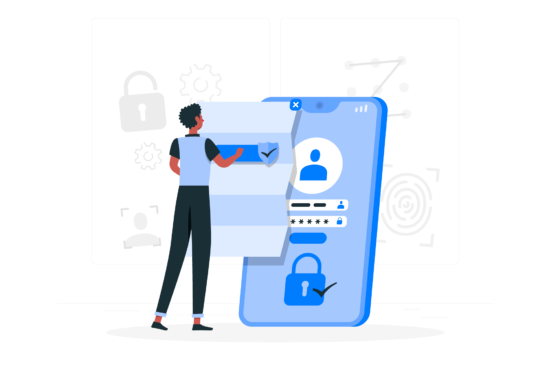
Push Authentication: A New Era in Multi-Factor Authentication
Want To Say Goodbye To Passwords and OTP Codes? Discover Push Authentication! It is easy for your password to be compromised through phishing attacks, even if it meets the cybersecurity strong password standards and is difficult to predict So we must get to know the technique of Push based Authentication. Some may recommend that you use Multi-Factor Authentication (MFA) to increase your security. Multi-Factor Authentication (MFA): MFA is the process of logging into your account through multiple steps. It requires you to enter more information, not just your password. But there is another obstacle that arises when using such ...
14th Feb 2024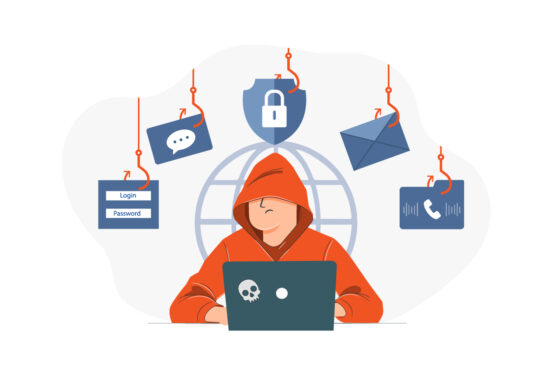
The Difference Between Phishing Attacks
The Difference Between Phishing Attacks Phishing attacks are harmful attacks used by criminals to steal personal and financial information from individuals and businesses. Attacks on individuals and businesses are becoming more common as we use the internet and technology more often in our daily lives. Phishing attacks involve the use of dishonesty and fraudulent methods to fool consumers into believing they are interacting with the trustworthiness of an unsuspecting destination, such as banks, email companies, or social media platforms. But what is the difference between phishing attacks? How can individuals and organizations protect themselves from such attacks? That is what ...
17th Jul 2023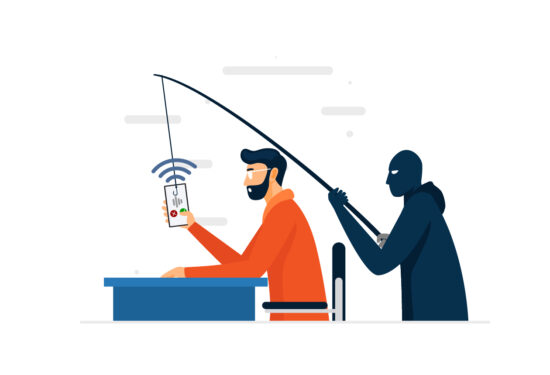
Understanding of the Vishing Meaning
Understanding of the Vishing Meaning Vishing, a combination of “voice” and “phishing,” is a sophisticated form of cybercrime that exploits voice communication to trick individuals and extract sensitive information. In this comprehensive guide, we will explore the meaning of it, the dangers associated with it, and effective methods to protect yourself against these malicious attacks. What is Vishing meaning? Vishing refers to the fraudulent practice of using telephone services to trick individuals into revealing personal and financial information. Scammers often pose as trusted organizations or individuals to gain their victims’ trust. By using social engineering tactics and manipulating ...
5th Jul 2023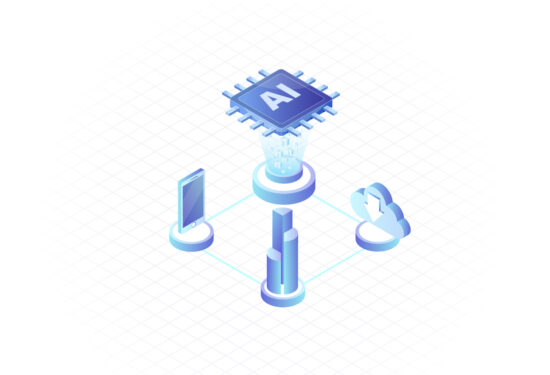
How could Artificial Intelligence tools threaten cybersecurity
How could Artificial Intelligence tools threaten cybersecurity? As Artificial Intelligence Tools become more sophisticated, they can be used to launch cyber attacks that are more complex and difficult to detect. In this article, we will explore how AI tools could threaten cybersecurity and what measures can be taken to mitigate these threats. Artificial Intelligence (AI) became popular today, and it is one of the most important terminologies in our current era, though it has been around since the 1950s. AI relies on the development of systems and technologies that help to do tasks by the simulation of human intelligence ...
11th May 2023
Cerebra is participating at GISEC 2023
We are thrilled to announce that we are going to GISEC 2023 and would like you to join us! Visit Cerebra at GISEC 2023 Hall #4 stand SP62 in Dubai World Trade Center from 14-16 March. GISEC Global is the leading gathering ground for the cybersecurity community worldwide. Top cybersecurity enterprises from 40 countries, CISOs from major corporations across the Middle East, Africa & Asia, government dignitaries and cyber leaders, regional and international innovators, and global experts collaborated to lead cybersecurity transformations across sectors and nations decisively. Get a chance to preview our latest Cybersecurity products: PhishGuard is the Phishing stimulations solution that raises the employees cybersecurity awareness ...
13th Mar 2023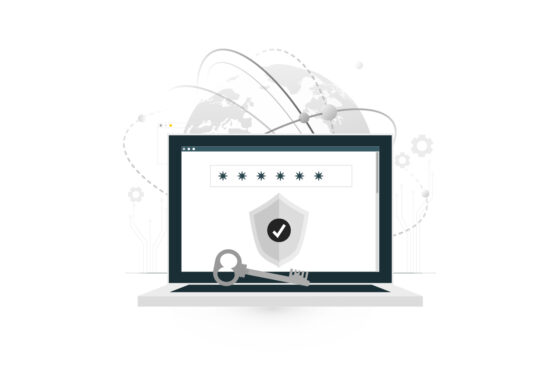
6 Tips to create a strong password easily!
Create a strong password easily! Today it’s very important to everyone who have an account either on social media or any other websites or services to Create a strong password, because you have to treat your password as your best stuff’s and protect it from others. Learn now the easiest and best tips you have to follow to make a strong password.. What is Password? A password is a string of characters that provides access to a digital system or service. It is a crucial security measure that helps to protect sensitive information from unauthorized access. Passwords can be as simple as a word ...
1st Feb 2023

